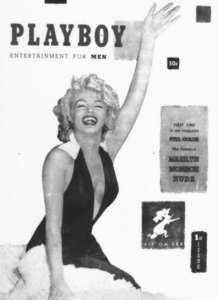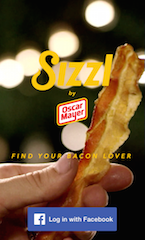THE BRAND LAWYER
The Business and Law of Brands and Branding from Steven Weinberg of Holmes Weinberg. PC
(TELLING THE TRUTH ABOUT) SIZE MATTERS

Brands love to tout their product benefits in advertising. The law allows for a certain amount of “flexibility” with the truth but there’s a line that can be and often is crossed. Stretching the truth is called “puffery” (as in “We’re the Best [fill in the blank],” which is permitted since consumers rarely if ever believe such claims. But if consumers rely on the statement made, and the statement is false, they and competitors have redress. Competitors can bring arbitration-like proceedings through various organizations like the Better Business Bureau or by filing lawsuits under federal or state false advertising laws. Consumers often bring class actions under deceptive trade practices laws. And there are some criminal laws that also can come into play.
Last month, a federal judge preliminarily approved a consumer class action settlement against Subway. The “class” consisted of all consumers in the US who purchased a “foot-long” or “six-inch” Subway sandwich between January 1, 2003 and October 2, 2015 — according to the lawsuits, these sandwiches were approximately 10% smaller than advertised. Among other things, the consumer class asked Subway to advertise that the sizes of its sandwiches vary.
One of the challenges for brands in our chaotic social media world is that there are folks working inside and outside of the brands engaged in marketing, and the controls over what’s being said can be, let’s say, loose. With consumers and their advocates screaming for “transparency” (i.e. truthfulness), engaging in false advertising is more than just a legal problem. And brands cannot solve this challenge by getting everyone marketing for them to sign policies — most policies are not followed or understood in many organizations. So brands who really want to make the right points and be true to their brand values need to establish cultures where truth (with maybe with a little bit of puffery) is the standard.
The risks? Aside from having to pay out what can be massive settlements, judges can award so-called “corrective advertising” monetary damages — an amount to be spent on counter-advertising that will undo the falsehood. But by far the biggest legal risk is a court issuing an order (called an injunction) that prevents further use of the ad or promo in all media just as the campaign is being launched, and lasts until the trial of the case is done, which can take years.
So the next time you want to use marketing that stretches that line a bit, and maybe crosses it, you may want to take a second look and consider whether it’s worth the potential fall-out.
MOVING ON, PLAYBOY STYLE

One of the great brands, PLAYBOY, has decided to undergo some plastic surgery. Launched in 1953 featuring Marilyn Monroe on its cover and as its first Playmate, this iconic brand from its beginning redefined sexual culture and launched a national conversation, with us still today, about the roles of and interplay between men and women in our culture. And while over the years the magazine published articles and stories by such lauded authors as Margaret Atwood, Woody Allen and Haruki Murakami and interviews with Malcolm X, Vladimir Nabokov, Martin Luther King Jr. and Jimmy Carter (who admitted lusting in his heart for women other than his wife), and taught men about high style and great jazz and living the cultured life displayed in the televised voyeurism presented in Playboy After Dark, and the hedonism at play behind the walls of the Playboy Mansions, at the beginning and the end of the day it was about the idealized, sexually charged nude women displayed in its pages.
That day has come to an end. Like all great brands, Playboy has seen itself in the mirror and decided change was needed. Nudity in modern times had been transformed into pornography readily available on the Web, a commodity which no longer had to be payed for. Faced with this reality and the loss of revenue that went with it, Playboy is redefining itself. There will still be provocative images of women, but now it will be a softer PG-13 version (which still drives revenue, like the Sports Illustrated Swimsuit issue and Victoria Secret ads), but there will be more content that sings to Millennial males — visual art, features about liquor, and the like — an updated lifestyle guide for younger men.
Whether or not the brand succeeds in this new face is of course a matter of time. But given the options, as its CCO (Chief Content Officer) Cory Jones said, “it is the right thing to do.” Stay tuned.
THE WORLD’S MOST VALUABLE BRANDS

Interbrand, a leading brand consulting agency, has released its latest annual report of the world’s most valuable brands. As a sign of our times, the top 6 winners are tech companies. Not surprisingly, for the third consecutive year, Apple took the top spot with Google in second. Apple’s value skyrocketed 43% over last year and is now valued at $170 billion. Google increased 12% to a valuation of $120 billion. The other four top tech companies are Microsoft ($67 billion), IBM ($65 billion), Samsung ($45 billion) and Amazon (up 29% to 38 billion and the first time in made the top ten). Facebook, described as a platform and not a tech company, moved up to number 23 ($22 billion, up 54%).
Interestingly, Apple and Google are also going electron to electron in competing for retail sales. And given the overall goal of tech companies to share in the online retail market, it’s predicted that tracking consumer spending habits online is going to be one of the largest growth areas next year for digital media. The real race is predicted to be between Apple and Google, which alone are the only companies that can effectively scale in both the mobile advertising and mobile device markets. For more on this, see http://digiday.com/platforms/apple-ibeacon-google-tracking-retailers.
BANNER ADS ARE NOT HAVING A BANNER YEAR
With so much attention on social media for brand marketing, you might be surprised to learn that the majority of companies are not relying on social for revenue, but instead for consumer engagement. In fact, recent studies show that social media budgets are still hovering around 10% of the total with most online budgets going to paid ads. But ads are still a challenge – other recent studies show that Baby Boomers and Millennials don’t like and are blocking them. And here are some more important stats recently collected by Hubspot (http://blog.hubspot.com/marketing/horrifying-display-advertising-stats?utm_campaign=blog-rss-emails&utm_source=hs_email&utm_medium=email&utm_content=22283717):
Display ad viewability rates did not budge between 2013 and 2014. (Source: comScore)
The average clickthrough rate of display ads across all formats and placements is 0.06% (Source: Display Benchmarks Tool)
Ad blocking grew by 41% globally in the last 12 months. (Source: PageFair)
There are now 198 million active ad block users around the world. (Source: PageFair)
A 2013 study revealed that 28% of respondents admitted to hiding their activities from advertisers — second only to criminals. (Source: Pew Research Center)
A study revealed that only 2.8% of participants thought that ads on website were relevant. (Source: Infolinks and bannerblindness.org)
A January 2014 study found that 18- to 34-year-olds were far more likely to ignore online ads, such as banners and those on social media and search engines, than they were traditional TV, radio and newspaper ads. (Source: eMarketer)
About 50% of clicks on mobile ads are accidental. (Source: GoldSpot Media)
54% of users don’t click banner ads because they don’t trust them. (Source:BannerSnack)
33% of internet users find display ads completely intolerable (Source: Adobe)
And other studies have shown that Gen Xr’s and Millennials really dislike native ads — stories and videos that look like news or objective information but instead are ads. So overall, there are some real challenges ahead for brand digital marketing.
BEST NEW BRAND OF THE YEAR
Not to be undone by other celebrity online retail stores, Stephen Colbert has announced his own new online brand, Covetton House. Actually, the brand is a satire of the celebrity online retail world, most of which has been a total failure. Colbert calls the Covetton House a “personal curateable lifestyle brand” which blends “classic Southern living, the breezy charm of the English countryside and whatever they had leftover at the prop warehouse.”
Typical of his mocking products is “Want,” a set of “beautifully hand touched suede coasters” for $175. According to Mr. Colbert, “They’re an elegant way to say to guests ‘don’t get these wet.”
A video of Mr. Colbert discussing his new brand is at http://digiday.com/brands/stephen-colbert-launches-personal-curateable-lifestyle-brand/
THE MEAT MEET MARKET

Just when you thought you’ve seen it all….. Oscar Mayer has debuted a new dating app named “Sizzl” designed to help people find their soul mate using their bacon preferences. According to Oscar Mayer, “Nothing brings people together like a slice of delicious bacon…”In love, as it is in bacon, it’s important to be discerning when selecting your perfect match and to never settle for less than the best.”
Talk about throwing a bone to late night hosts and the world of comedy. And PETA should have a field day with this one. Anyway, I have to stop writing now. The tears of laughter are flowing too hard.